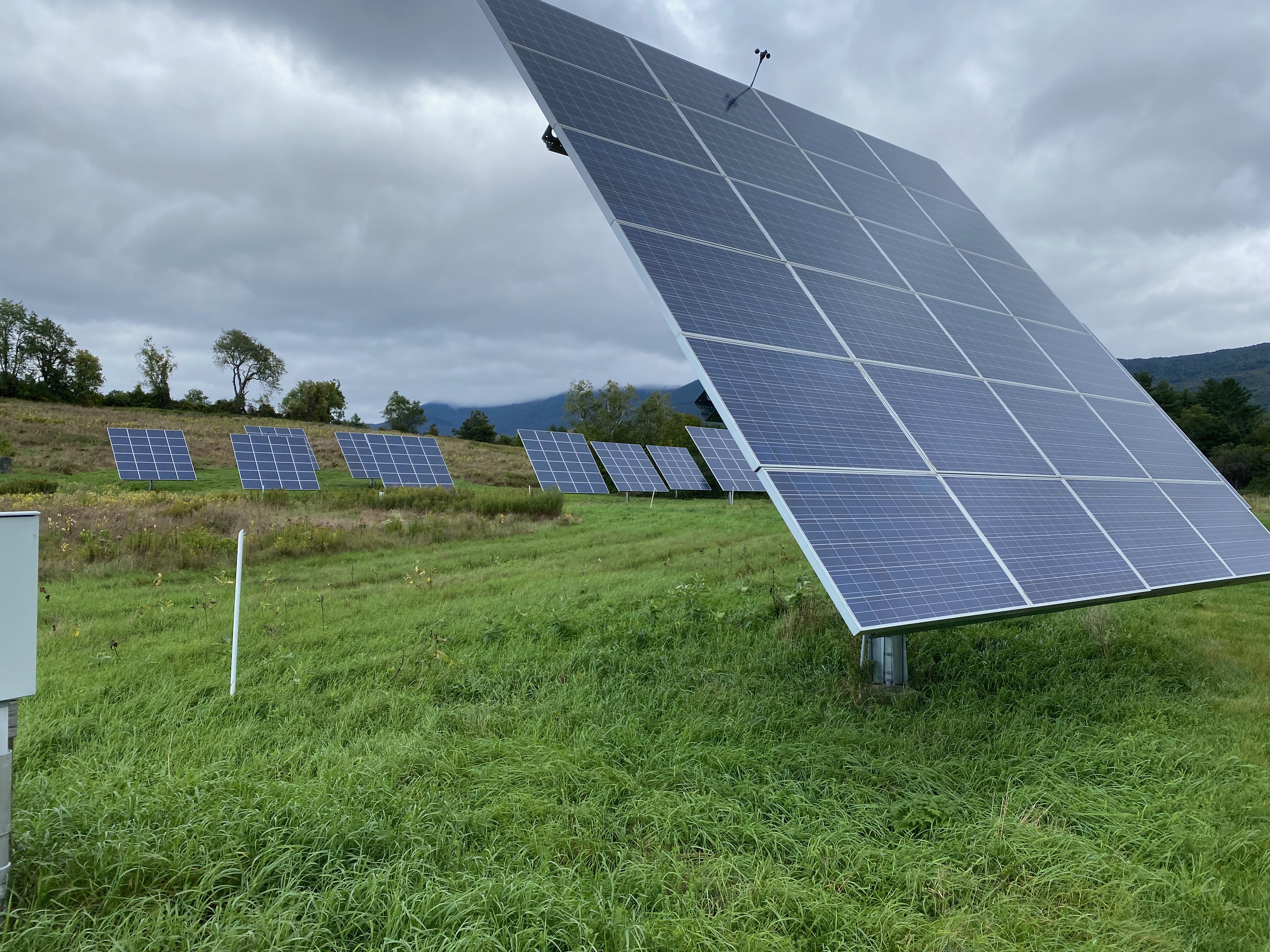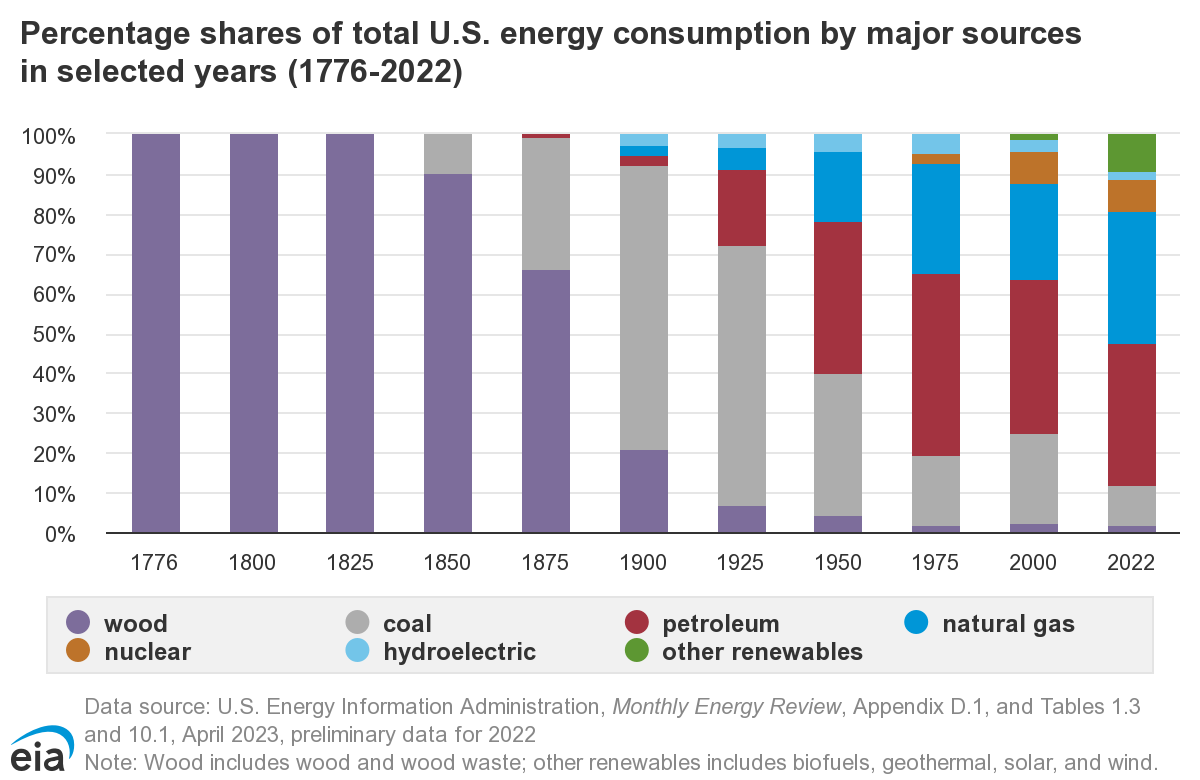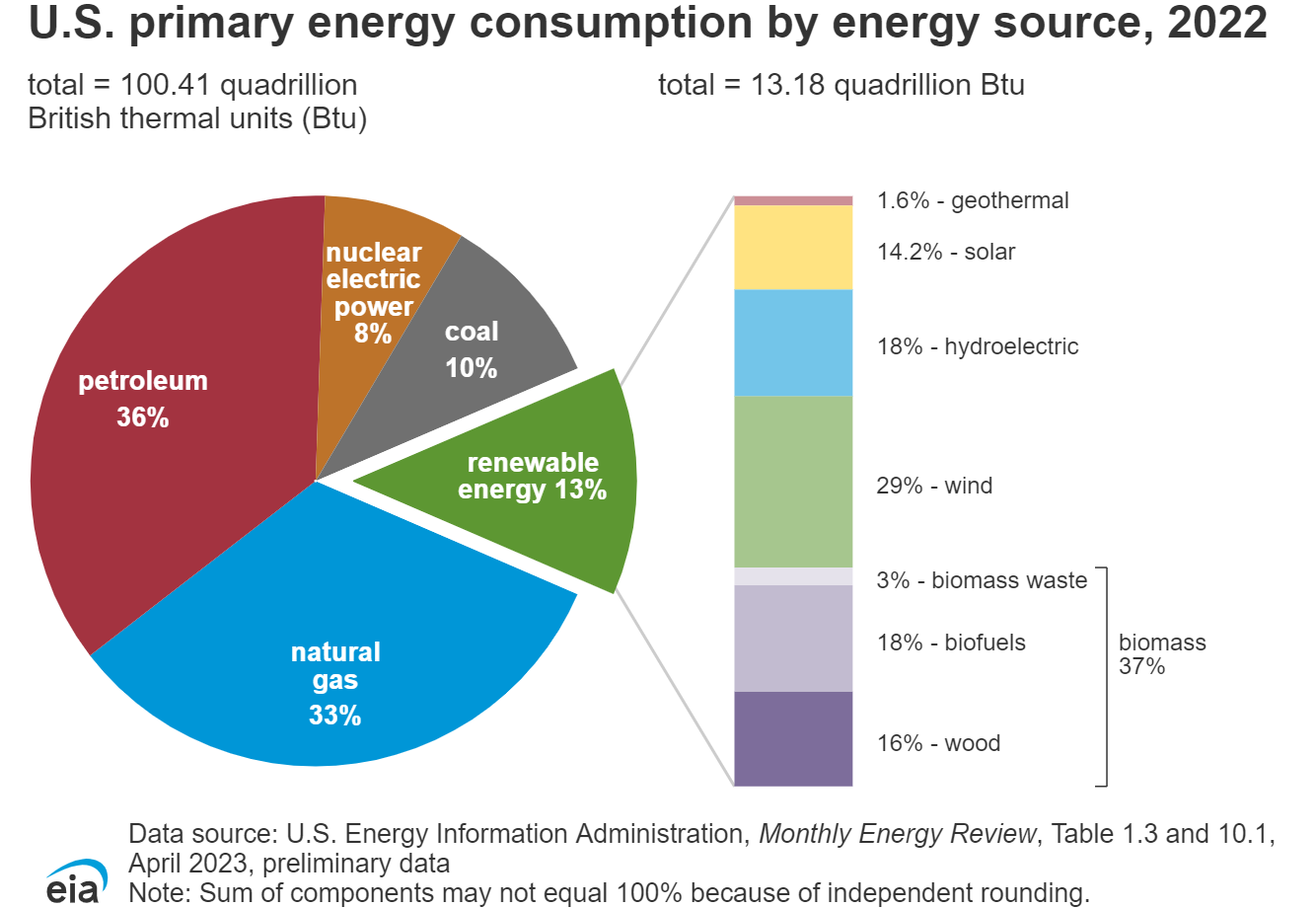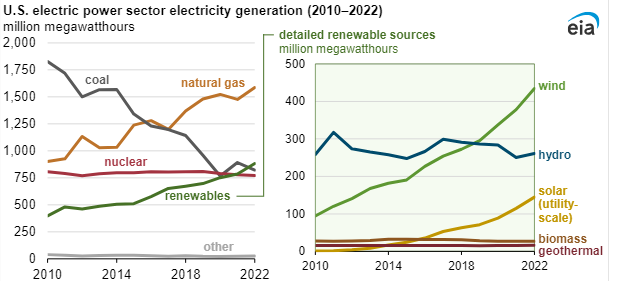7 Renewable Energy Systems: Solar, Wind, Hydropower, and Geothermal

This unit is focused on renewable energy systems and sources. In contrast to fossil fuels, these sources are rapidly changing with respect to both technology and implementation. We will discuss the most common renewable sources (solar, wind, hydro, and geothermal) in more detail and briefly mention some, but not all, of the less common and emerging technologies. As we did with non-renewable energy in the previous unit, we will look at the primary energy sectors that use renewable energy and the fundamental calculations used to quantify energy generation, energy efficiencies, system capacity factors and Energy Return on Investment (EROI) for these renewable energy systems. We will close the chapter with energy storage, a critical component for renewable energy.
Learning Objectives
At the end of this unit, students should be able to:
-
Compare and contrast main renewable energy sources in the US and World
-
Define and use the Capacity Factor for renewable energy calculations
-
Give estimates of the Efficiency of different renewable energy systems
-
Estimate solar energy production from Solar PV Panel parameters?
-
Estimate wind energy production from Wind Turbine system parameters?
-
Explain typical efficiencies, capacity factors, and EROI for renewable energy systems
-
Explain the current major limitations for implementation of solar, wind, hydro, and geothermal energy
-
Define and explain Energy Return on Investment (EROI) for Renewable Energy Systems
-
Estimate renewable energy payback times with and without production credits and rebates
-
Define and explain Energy Return on Investment (EROI) for Renewable Energy Systems
-
Explain the main Triple Bottom Line Impacts (Emissions, Economics, Environmental Justice) For Renewable Energy sources across their life cycles
7.1 Resources
University of Michigan Factsheets - an online source that’s updated yearly for sustainabilty referenced information. Within energy, there site contains information on Biofuels, Geothermal, Solar, Wind, General renewables, and Grid Energy storage. These factsheets are updated annually.
National Renewable Energy Laboratory - the US national laboratory site focused on renewable energy research and information
7.2 What is Renewable Energy?
Renewable energy is defined as energy generated from sources that are renewable, meaning there is no foreseeable limit to the amount of this energy source. This contrasts with fossil fuels which have finite amounts that can be extracted from the earth based both on supply, accessibility, and cost. The most commonly discussed renewable energy sources are solar, wind, hydropower, geothermal, and biomass.
While solar energy is generally considered as direct energy from the sun, it’s worth noting that most fossil and renewable energy sources are also based on indirect solar energy. Oil, natural gas, and coal are derived from biomass that was transformed under heat and pressure over hundreds of millions of years into chemicals which can be combusted to release energy. Wind energy is related to solar energy in the sense that the uneven heating of the planet by the sun leads to atmospheric pressure differences that drive wind currents. Solar energy also drives the water cycle and seasons which lead to rain and snow and water that either flows in rivers and streams or is collected in natural or man-made lakes. Biomass includes plants grown in the present with solar energy, and these can be harvested and converted to different types of energy sources as we will discuss in this unit.
Biomass, like fossil fuels, has chemical energy stored in the bonds of the carbon-based materials. Solar energy is electromagnetic energy while wind, hydropower and tidal energy are based on the kinetic energy within the moving molecules of air or water. Stored water in a reservoir has potential energy based on its height and is converted to kinetic energy when it flows.
Geothermal energy is due to heat in the earth and is not related to the sun, but is renewable on a human time scale. Tidal or wave energy is related to the moon’s gravitational pull rather than the sun, but is also considered renewable. Nuclear energy is due to energy within atoms and is not renewable nor related to the sun.
All of the basic units and energy concepts introduced in the previous chapter apply for renewable energy sources. There are important differences, however, in the efficiencies, capacity factors, and environmental impacts across the renewable energy system life cycles.
An important distinction to make from the start is that the “fuel” for renewable energy is provided for free as an ecosystem service. There are still limitations to the amount of sun, wind, and water available at a given time, but there are no fuel costs and much fewer life cycle inputs associated since these fuels are not extracted from the earth in a traditional sense. Deep geothermal energy is an exception to this as the hot steam from within the earth must be extracted by drilling and distributing this steam. All of these renewable technologies due have infrastructure associated with them, however, and solar photovoltaic panels, wind turbines, and hydropower dams have significant life cycle inputs and outputs associated with the equipment that transforms the energy from one form to another. This means that renewable energy sources also have tradeoffs, but they are different than those for fossil fuels.
7.2.1 Use Patterns of Renewable Energy
The consumption or use of energy generated from renewable source has been increasing rapidly in recent years relative to the fossil fuels as seen in many of the figures from the previous chapter.
For renewable energy sources, location is a key factor that determines the feasibility and amount of energy that can be obtained. This contrasts with fossil fuels which have the major advantage that they can be transported to and stored for future use in locations far from their extraction and refining origins. Trains, ships, trucks, and hundreds of thousands of pipeline miles efficiently move fossil fuels regionally, nationally, and globally. This transport of fuels has logistics, costs, and environmental impacts, but research and analysis shows that these impacts are relatively low compared to other phases of the fuel life cycle.
Renewable energy in the form of wood biomass was the primary source of heat energy (and building material) for centuries and drove the initial development in the US. Most forests in the US, especially on lands east of the Mississippi River, were cut down for fuel and building in the 18 and 19th century as the population expanded. Wood was replaced for fuel by coal and then oil in the latter half of the 1800s and then much more significantly in the 1900s.
Figure 7.1 shows these trends graphically as do several graphs in the previous chapter.

Figure 7.1: Distribution of energy consumption by source since 1776 in the US. Source: Energy Information Administration - https://www.eia.gov/energyexplained/renewable-sources/
The US energy consumption pie chart in Figure 7.2, shows that renewable energy made up approximately 13\(\%\) of the total energy consumption in the US in 2022. What may surprise most people is the fact that renewable energy is still dominated by biomass and only recently have wind and solar started to increase as technology improves and prices decrease. The renewable sources of wind, solar, hydro, biomass, and geothermal—surpassed coal-fired generation in the electricity generation sector for the first time in 2022 and are now second only to natural gas as shown in Figure @ref(fig:knitr-detailedrenewTrend. While biomass is a still the highest percentage of overall energy from renewables, this fuel is mostly combusted for heat or transportation fuel and only contributes a small percentage to electricity generation.

Figure 7.2: Detailed distribution of energy consumption by source in the US on 2021. Source: Energy Information Administration - https://www.eia.gov/energyexplained/renewable-sources/

Figure 7.3: Detailed distribution of energy consumption by source in the US between 2010 and 2022. Source: Energy Information Administration - https://www.eia.gov/energyexplained/renewable-sources/